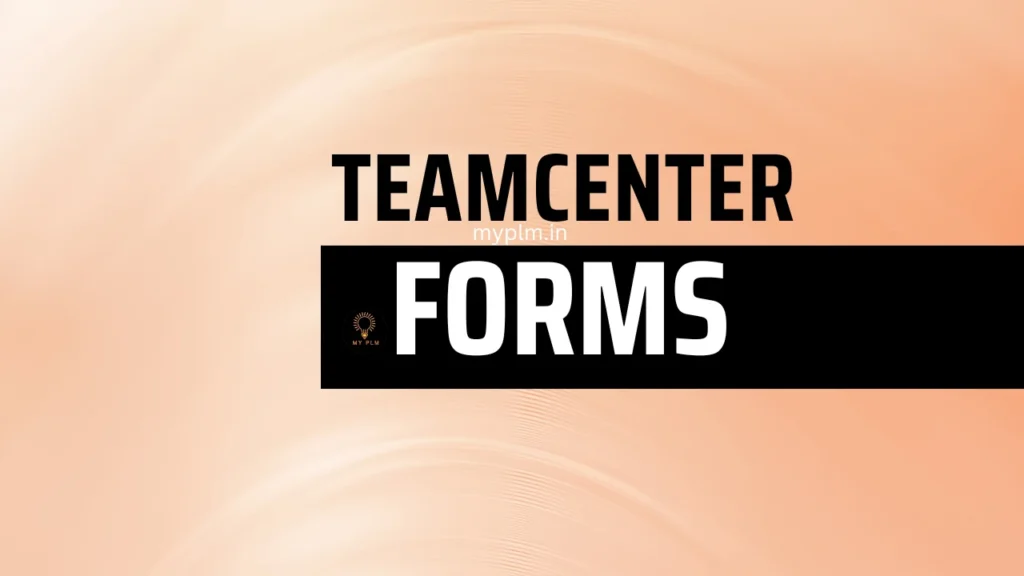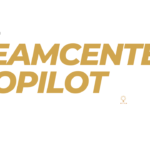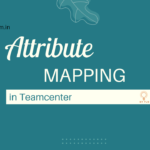In the ever-evolving landscape of digitalization, efficient data management lies at the heart of organizational success. Businesses across industries are constantly seeking ways to streamline their processes, enhance collaboration, and boost productivity. One such solution that has gained significant traction is Teamcenter, a comprehensive product lifecycle management (PLM) software suite developed by Siemens.
Central to Teamcenter’s functionality is the concept of forms. In this blog, we delve into what forms in Teamcenter entail, their significance, and how they contribute to optimizing data management processes within organizations.
Table of Contents
What are Forms in Teamcenter?
Forms in Teamcenter serve as structured templates or containers that facilitate the collection, organization, and presentation of data related to various aspects of product development and management. Essentially, forms provide a standardized framework for capturing and managing information throughout the product lifecycle.
These forms can encompass a wide range of data types, including text fields, numeric values, dates, attachments, and more. A highly customizable solution, they can be tailored to meet specific requirements and workflows.
Significance of Forms in Teamcenter
1 Data Standardization
By utilizing predefined form templates, organizations can ensure consistency and standardization in the way data is captured and stored. This helps in eliminating discrepancies, reducing errors, and promoting uniformity across different departments and projects.
2 Streamlined Processes
Forms play a crucial role in streamlining various processes within the product lifecycle, such as design reviews, change management, quality control, and regulatory compliance. They provide a structured approach to data management, enabling teams to efficiently collect, analyze, and act upon relevant information.
3 Enhanced Collaboration
With outlines, cross-functional teams can collaborate more effectively by accessing and updating pertinent data within a centralized platform. This fosters better communication, transparency, and accountability across different stakeholders involved in the product development process.
4 Traceability and Auditability
Outlines in Teamcenter facilitate traceability by capturing a comprehensive audit trail of all changes made to the data over time. This not only ensures regulatory compliance but also enables organizations to track the evolution of product information and make informed decisions based on historical data.
5 Scalability and Flexibility
As organizations evolve and their requirements change, outlines in Teamcenter offer scalability and flexibility to adapt to evolving business needs. Whether it’s adding new data fields, modifying existing templates, or creating entirely new forms, Teamcenter provides the tools to accommodate these changes seamlessly.
Examples of Forms in Teamcenter
1 Engineering Change Order (ECO) Form
Used to initiate and track changes to product designs, including revisions, approvals, and implementation status.
2 Bill of Materials (BOM) Form
Offers an organized way to list the components, materials, and assemblies needed to manufacture a product.
3 Quality Inspection Form
Used to record inspection results, non-conformances, and corrective actions taken during the quality control process.
4 Supplier Evaluation Form
This enables organizations to assess and manage supplier performance based on predefined criteria such as delivery times, product quality, and compliance with contractual agreements.
5 Risk Assessment Form
Facilitates the identification, evaluation, and mitigation of risks associated with product development and manufacturing processes.
Conclusion
Forms in Teamcenter serve as indispensable tools for effective data management and collaboration throughout the product lifecycle. By leveraging structured templates and standardized processes, organizations can streamline operations, enhance productivity, and ultimately drive innovation in today’s competitive market landscape. Embracing the power of outlines in Teamcenter is not just about managing data—it’s about empowering teams to make informed decisions, accelerate time-to-market, and deliver superior products that meet and exceed customer expectations.
Read More Articles
Exploring the Power of Tiles in Teamcenter’s Active Workspace Client
Understanding the Contrast: Volume vs. Database in TC
Exploring TC: The Central Hub for Product Lifecycle Management
Understanding Item Revision in TC: A Comprehensive Guide
Unlocking Efficiency and Precision: Understanding Workflow Designer in TC
Understanding PLM (Product Lifecycle Management): A Comprehensive Guide
Demystifying BMIDE in TC: Empowering Effective PLM Solutions
Understanding Organizations in TC: Building Efficient Work Structures
Demystifying Datasets in TC: A Comprehensive Guide
A Step-by-Step Guide to Installing TC Software
Revealed Pseudofolders in Siemens TC: Simplifying Data Management for Engineers
Unlocking TC’s Potential: A Guide to Creating Custom Properties







